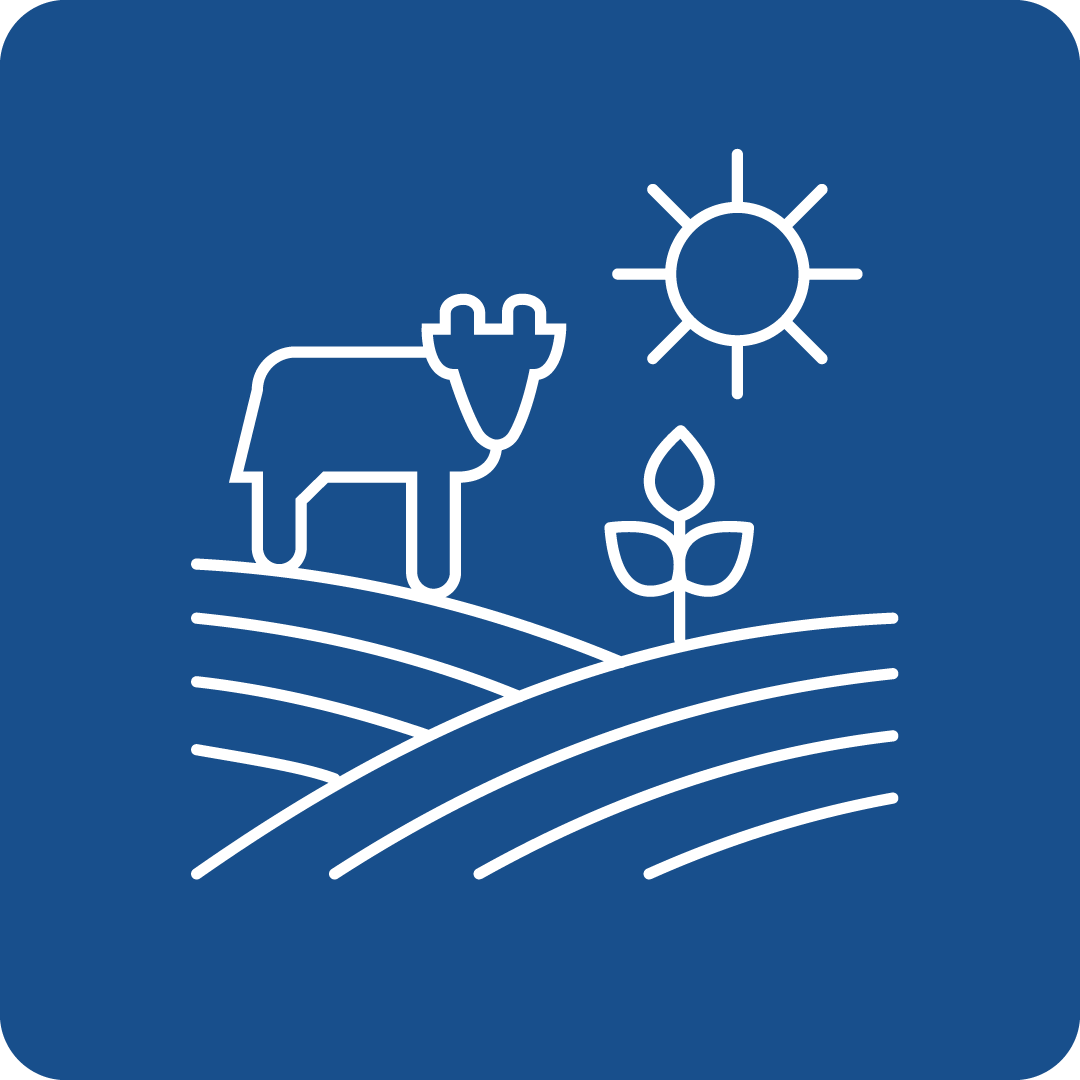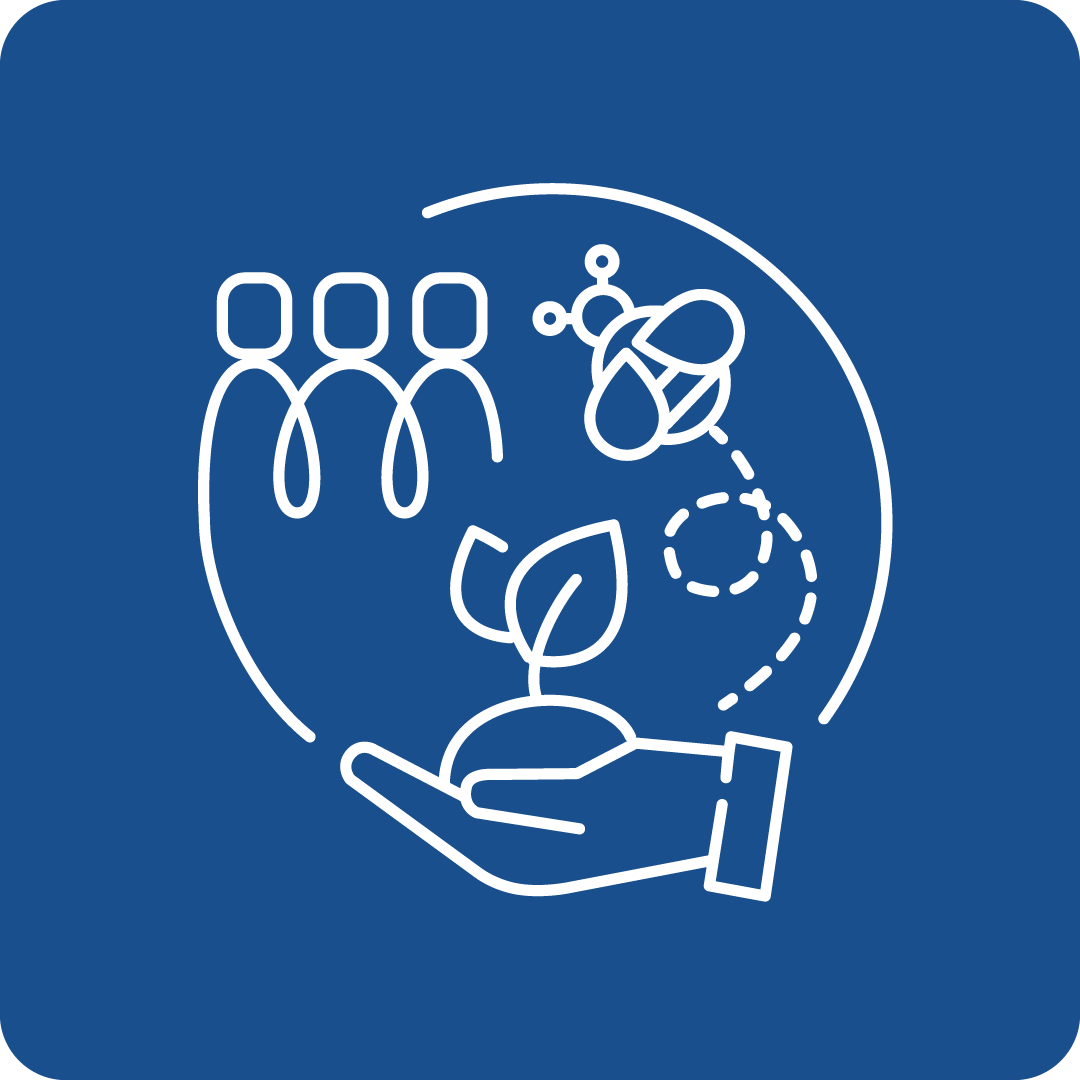Filter Search for grants
Call Navigation
Deadline expired
The deadline for this call has expired.
Call key data
Reintroduction of landscape features in intensive agricultural areas
Funding Program
Horizon Europe: Cluster 6 - Food, Bioeconomy, Natural Resources, Agriculture and Environment
Call number
HORIZON-CL6-2024-BIODIV-01-7
deadlines
Opening
17.10.2023
Deadline
22.02.2024 17:00
Funding rate
100 %
Call budget
€ 5,000,000.00
Estimated EU contribution per project
€ 5,000,000.00
Link to the call
Link to the submission
Call content
short description
In supporting the implementation of the European Green Deal, the EU biodiversity strategy for 2030, the farm to fork strategy and the common agricultural policy, successful proposals will contribute to develop and improve practices in agriculture to support and make sustainable use of biodiversity and a wide range of ecosystems services.
Call objectives
According to the EU biodiversity strategy for 2030, “to provide space for wild animals, plants, pollinators and natural pest regulators,10% of agricultural area should be brought back under high-diversity landscape features, including, inter alia, buffer strips, rotational or non-rotational fallow land, hedges, non-productive trees, terrace walls, and ponds”. These should help enhance carbon sequestration, prevent soil erosion and depletion, filter air and water, and support climate adaptation. In addition, more biodiversity often leads to more agricultural production over the medium and long term.
In the EU there are large agricultural intensive areas where nature has almost disappeared. There is a need to reintroduce nature to improve the state of the environment by delivering ecosystem services and as a contribution to climate mitigation and adaptation. In particular it is needed to achieve ecological corridors, in conjunction with other multifunctional Nature-based Solutions. Landscape features may also be included as remedial measures to protect soil; their biogeochemical functions may counteract the spread of chemical pollutants from agriculture to groundwater and open waters, especially those derived from natural and mineral fertilizers.
The new common agricultural policy (CAP) may offer specific tools to support farmers who dedicate space for biodiversity rich landscape features, such as dedicated eco-schemes or area related interventions (such as agri-environmental interventions) or non-productive investment interventions (one-off costs arising from establishing landscape features such as hedges, ponds, wetlands or stone walls). The agri-environment interventions under CAP Strategic Plans will continue to be implemented on a voluntary basis. They have been used in a quite limited extent until now to promote the reintroduction of biodiversity-rich landscape features in areas of intensive agriculture. Eco-schemes are new tools to support farmers in the first pillar of the CAP (direct payments) in the form of incentives to farmers to adopt more environment-friendly practices. They may cover the reintroduction of biodiversity rich landscape features, but this will depend on a number of factors, notably the implementation choices of Member States in their CAP Strategic Plans and the level of support.
This topic intends to look into key-factors which may lead to the reintroduction of landscape features in areas of intensive agriculture beyond financial incentives.
Proposals should:
- assess the increase of the environmental and economic value and the potential for land productivity linked to the increase of biodiversity rich landscape elements on agricultural land with intensive organization of production. They should address the valuation (monetary and social benefits) of the ecosystem services of landscape features, based on existing R&I projects, and assess the perception of land managers/owners of this value increase. Proposals could notably build on available knowledge on Natural Capital Accounting.
- investigate into possible business models which can combine the reintroduction of landscape features with rewarding economic activities including possibly recreational ones. This could build on positive experiences with productive trees part of arable land agroforestry systems. Projects should address the need to build green corridors and consider where and why reintroducing landscape features makes sense for this. The need to restore water systems through the restoration of streams and small rivers should be included.
- assess the decision-making process of land owners/managers which can lead to the reintroduction of landscape features in areas of intensive agriculture and analyse enabling mechanisms. This assessment should go beyond analysing available financial incentives and should include in particular factors such as social, generational and gender aspects, awareness about the intrinsic value of biodiversity and the importance of agricultural land for maintaining biodiversity in the natural landscape matrix in the context of climate change and persistent landscape fragmentation, the type of land exploitation (land in private ownership or lent, legal form of holdings…), etc,
- identify possible pathways towards more diversified business models involving nature and what could be the right incentive(s) (beyond financial incentives) to lead to change.
- formulate strategies to reintroduce landscape features in areas of intensive agriculture.
The topic is open to all types of farming systems (e.g., arable farming, horticulture, fruit trees) in various geographical and pedo-climatic and conditions.
This topic should involve the effective contribution of social sciences and humanities (SSH) disciplines.
Proposals should build on the results of relevant EU-funded research projects. They should use existing platforms and information sharing mechanisms notably the EC Knowledge Centre for Biodiversity.
The JRC may provide expertise on landscape features identification, typology, quantification in the frame of EU policy.
read more
Expected results
Projects results are expected to contribute to all of the following expected outcomes:
- Drivers and challenges for the re-introduction of landscape features in intensive farming areas are better identified.
- Strategies to reintroduce landscape features in intensive agricultural areas for national and regional policy- and decision-makers are built, contributing to the following key-commitments of the EU biodiversity strategy 2030: “At least 10% of agricultural area is under high-diversity landscape features”; and “Three billion new trees are planted in the EU, in full respect of ecological principles”.
- Solutions for climate change adaptation and to provide ecosystem services, in particular carbon sequestration, are developed for areas of intensive agriculture.
- The ground for possible future demonstration projects is prepared.
Eligibility Criteria
Regions / countries for funding
Moldova (Moldova), Albania (Shqipëria), Armenia (Հայաստան), Azerbaijan (Azərbaycan), Belarus (Беларусь), Bosnia and Herzegovina (Bosna i Hercegovina / Босна и Херцеговина), Faeroes (Føroyar / Færøerne), Georgia (საქართველო), Iceland (Ísland), Israel (ישראל / إِسْرَائِيل), Kosovo (Kosova/Kosovë / Косово), Montenegro (Црна Гора), Morocco (المغرب), New Zealand (Aotearoa), North Macedonia (Северна Македонија), Norway (Norge), Serbia (Srbija/Сpбија), Tunisia (تونس /Tūnis), Türkiye, Ukraine (Україна), United Kingdom
eligible entities
Education and training institution, International organization, Non-Profit Organisation (NPO) / Non-Governmental Organisation (NGO), Other, Private institution, incl. private company (private for profit), Public Body (national, regional and local; incl. EGTCs), Research Institution incl. University, Small and medium-sized enterprise (SME)
Mandatory partnership
Yes
Project Partnership
To be eligible for funding, applicants must be established in one of the following countries:
- the Member States of the European Union, including their outermost regions
- the Overseas Countries and Territories (OCTs) linked to the Member States
- third countries associated to Horizon Europe - see list of particpating countries
Only legal entities forming a consortium are eligible to participate in actions provided that the consortium includes, as beneficiaries, three legal entities independent from each other and each established in a different country as follows:
- at least one independent legal entity established in a Member State; and
- at least two other independent legal entities, each established in different Member States or Associated Countries.
Any legal entity, regardless of its place of establishment, including legal entities from non-associated third countries or international organisations (including international European research organisations) is eligible to participate (whether it is eligible for funding or not), provided that the conditions laid down in the Horizon Europe Regulation have been met, along with any other conditions laid down in the specific call topic.
A ‘legal entity’ means any natural or legal person created and recognised as such under national law, EU law or international law, which has legal personality and which may, acting in its own name, exercise rights and be subject to obligations, or an entity without legal personality.
Specific cases:
- Affiliated entities — Affiliated entities (i.e. entities with a legal or capital link to a beneficiary which participate in the action with similar rights and obligations to the beneficiaries, but which do not sign the grant agreement and therefore do not become beneficiaries themselves) are allowed, if they are eligible for participation and funding.
- Associated partners — Associated partners (i.e. entities which participate in the action without signing the grant agreement, and without the right to charge costs or claim contributions) are allowed, subject to any conditions regarding associated partners set out in the specific call conditions.
- Entities without legal personality — Entities which do not have legal personality under their national law may exceptionally participate, provided that their representatives have the capacity to undertake legal obligations on their behalf, and offer guarantees to protect the EU’s financial interests equivalent to those offered by legal persons.
- EU bodies — Legal entities created under EU law including decentralised agencies may be part of the consortium, unless provided for otherwise in their basic act.
- Joint Research Centre (‘JRC’)— Where provided for in the specific call conditions, applicants may include in their proposals the possible contribution of the JRC but the JRC will not participate in the preparation and submission of the proposal. Applicants will indicate the contribution that the JRC could bring to the project based on the scope of the topic text. After the evaluation process, the JRC and the consortium selected for funding may come to an agreement on the specific terms of the participation of the JRC. If an agreement is found, the JRC may accede to the grant agreement as beneficiary requesting zero funding or participate as an associated partner, and would accede to the consortium as a member.
- Associations and interest groupings — Entities composed of members (e.g. European research infrastructure consortia (ERICs)) may participate as ‘sole beneficiaries’ or ‘beneficiaries without legal personality’. However, if the action is in practice implemented by the individual members, those members should also participate (either as beneficiaries or as affiliated entities, otherwise their costs will NOT be eligible.
other eligibility criteria
The Joint Research Centre (JRC) may participate as member of the consortium selected for funding.
Additional information
Topics
Relevance for EU Macro-Region
EUSAIR - EU Strategy for the Adriatic and Ionian Region, EUSALP - EU Strategy for the Alpine Space, EUSBSR - EU Strategy for the Baltic Sea Region, EUSDR - EU Strategy for the Danube Region
UN Sustainable Development Goals (UN-SDGs)
![]()
![]()
![]()
Additional Information
All proposals must be submitted electronically via the Funders & Tenders Portal electronic submission system (accessible via the topic page in the Search Funding & Tenders section). Paper submissions are NOT possible.
Proposals must be complete and contain all parts and mandatory annexes and supporting documents, e.g. plan for the exploitation and dissemination of the results including communication activities, etc.
The application form will have two parts:
- Part A (to be filled in directly online) contains administrative information about the applicant organisations (future coordinator and beneficiaries and affiliated entities), the summarised budget for the proposal and call-specific questions;
- Part B (to be downloaded from the Portal submission system, completed and then assembled and re-uploaded as a PDF in the system) contains the technical description of the project.
Annexes and supporting documents will be directly available in the submission system and must be uploaded as PDF files (or other formats allowed by the system).
The limit for a full application (Part B) is 45 pages.
Contact
To see more information about this call, you can register for free here
or log in with an existing account.
Log in
Register now


